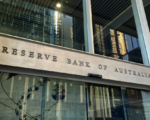U.S. Inflation Edges Up, But Investors Find Reasons to Be Thankful

Inflation Data and Market Reactions
U.S. inflation in October showed a modest uptick, with the personal consumption expenditures (PCE) price index rising by 0.2% month-over-month and 2.3% year-over-year, as reported by the U.S. Commerce Department. Core inflation, which excludes food and energy, increased by 0.3% month-over-month, with an annual reading of 2.8%, slightly higher than the previous month’s 2.7%. These figures were in line with analysts’ expectations, and they had little impact on investor sentiment.
Despite the inflation data, U.S. stock markets saw a pause in their recent rally. The S&P 500 ended its seven-day winning streak, falling by 0.38%. Bond prices rose as Treasury yields slipped. On the global front, Asia-Pacific stocks saw a mixed performance, with Australia’s S&P/ASX 200 climbing to a record high, while South Korea’s Kospi index remained flat after an unexpected rate cut by its central bank.
South Korea’s Unexpected Rate Cut
On Thursday, the Bank of Korea (BOK) reduced its benchmark interest rate by 25 basis points to 3%, surprising economists who had expected no change. This decision came after South Korea reported disappointing third-quarter GDP growth of just 0.1%. The BOK also lowered its 2024 growth outlook to 2.2%, down from 2.4%. The rate cut is seen as a response to slow economic activity and the need for stimulus.
Yuan Pressure Amid Tariff Threats
China’s offshore yuan is facing downward pressure, with forecasts predicting it could weaken to an average of 7.51 per U.S. dollar by the end of 2025, marking its lowest level on record. This decline is largely attributed to concerns over U.S. tariff threats and lower interest rates in China. As tensions rise between the U.S. and China, the yuan is expected to face further challenges, adding to the uncertainty in the global markets.
U.S. Tariffs: Potential Winners and Losers
While U.S. President-elect Donald Trump’s tariff plans raise concerns for investors and companies, some sectors could stand to benefit. The proposed tariffs could be advantageous for technology firms that specialize in optimizing supply chains. These companies could gain from the increased demand for their services as businesses seek to adjust to the higher costs imposed by tariffs.
Investor Sentiment Ahead of Thanksgiving
Ahead of the Thanksgiving holiday, U.S. investors kept their trading light, with trading volume in the SPDR S&P 500 exchange-traded fund (ETF) falling by 22.6% below its 30-day average. Despite the S&P 500’s dip and the Dow Jones Industrial Average’s 0.31% slide, there were no signs of a panic sell-off. Instead, traders appeared to be taking profits from Big Tech stocks, causing the Nasdaq Composite to drop 0.6%.
Inflation’s modest increase didn’t rattle investors either. In fact, many seem confident that the U.S. Federal Reserve may lower interest rates by 25 basis points at its upcoming December meeting. Market expectations for this rate cut have risen to 68.2%, up from 55.7% a week earlier, according to the CME FedWatch tool.
A Bright Market Outlook
Despite some market fluctuations, the overall sentiment remains positive. Chris Verrone from Strategas noted that over three-quarters of the stocks in the S&P 500 are above their 200-day moving average, indicating a steady upward trend and a healthy market. With the economy nearing full employment and inflationary pressures easing, many analysts believe that the market is still in a solid position, providing investors with plenty to be thankful for this Thanksgiving.





















